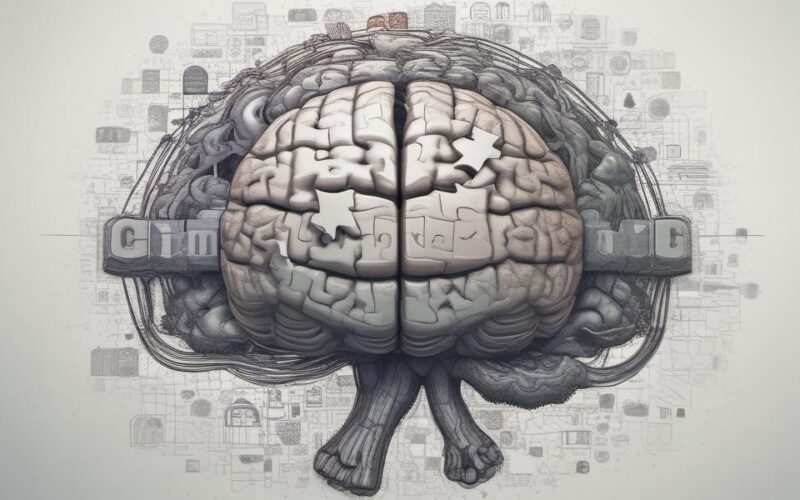Preface
Perhaps the most profound mystery not yet unraveled, consciousness has captivated thinkers, scientists, and philosophers through the ages. From the first flickers of life billions of years ago to the complex waltzing of neurons within the human brain, the journey of consciousness remains an epic quest—a quest to unravel the essence of what it means to be aware, to think, to feel. This essay embarks on a journey through time and thought, tracing the evolution of consciousness from its primordial roots to the forefront of scientific exploration. We stand on the shoulders of giants, from the philosophical musings of Descartes to the groundbreaking discoveries of Newton, venturing into the realms of quantum mechanics and the schematic mind. We discuss how quantum blueprint of the schematic mind shall one day decode the marvel that is conscious existence. Our quest is not merely an academic pursuit but a deeply personal voyage to understand the very essence of our being.
1. Dawn of Consciousness
(Let’s set the historical and evolutionary context for the emergence of consciousness.)
Sometime during the vast span of time, stretching from the emergence of the first prokaryotic cells around four billion years ago to the intricate complexity of the human brain, with its ninety billion neurons interwoven into a network of one hundred trillion synaptic connections, a remarkable evolution occurred. This evolutionary journey gave rise to the capacities for thought, emotion, sacrifice, creativity, and destruction. Such capabilities have propelled humanity towards both remarkable achievements and profound catastrophes. Albert Camus astutely observed that consciousness is the foundation of all existence, asserting that nothing holds value except through the lens of consciousness. Despite its pivotal role, the concept of consciousness long remained a contentious subject within the realms of hard sciences, where the primary objective has been the pursuit of objective reality. This hesitancy stems from a view that consciousness, often perceived as an internal monologue, lacked the tangible evidence required for scientific scrutiny.
René Descartes’ famous declaration, “I think, therefore I am,” encapsulates our most direct connection with reality, suggesting that the act of thinking is an undeniable proof of existence. This perspective underscores the importance of consciousness as the sole certainty in our lives. Historically, humanity has sought to defy mortality by anchoring existential hopes in the concept of consciousness, envisioned as an ethereal entity transcending physical existence. Referred to by various names such as Atman, anima, or soul, consciousness has been revered as a link to eternity, suggesting an essence that survives beyond our physical forms. However, the scientific community has traditionally greeted discussions of non-physical realms with skepticism, resulting in a slow progress towards a comprehensive scientific explanation of consciousness. The challenge of elucidating our inner experiences in scientific terms remains daunting and is unlikely to be overcome in a hurry.
2. The Brain’s Maze of Conscious Complexity
(Following from the above, let’s zoom in on the brain’s role in processing and integrating information to produce conscious awareness.)
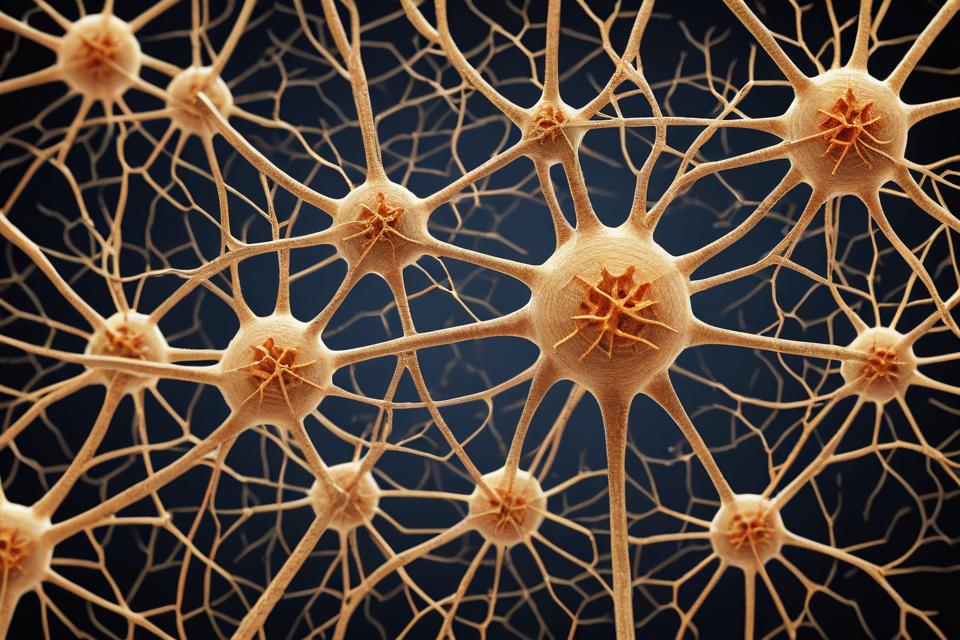
It is unequivocally understood that the brain is an intricately folded, moisture-rich organ dedicated to processing information, composed of countless cells. Scientific exploration, employing invasive techniques, has revealed that specific regions of the brain are dedicated to the processing of distinct types of sensory inputs—be it visual, auditory, olfactory, or linguistic. However, the mere act of information processing does not fully encapsulate the brain’s unique attributes. Numerous other physical systems, ranging from simple abacuses and thermostats to advanced computers, also engage in information processing. The question then arises: What sets apart the type of information processing that culminates in conscious awareness?
A defining characteristic of consciousness is the cohesive integration of information that traverses our conscious experience, assimilating it into a seamless operation. Additionally, consciousness is marked by its vast capacity to encompass an extensive array of mental activities. This range includes the processing of myriad sensory inputs, the flights of imagination, abstract thinking, planning, worrying, and anticipation, presenting an almost boundless mental repertoire. This implies that any single focus of conscious experience is distinctively separate from the plethora of other potential mental experiences at any given moment. Therefore, conscious awareness is distinguished by information that is both highly integrated across different domains and markedly differentiated from other possible mental states.
3. The Quantum Blueprint of the Schematic Mind
(Let’s discuss the concept of schematic representations and the role of quantum mechanics in understanding consciousness as a bridge between the cognitive and physical sciences.)
The human mind is adept at simplifying the complexities it encounters, favoring schematic representations over an overload of details for most environmental interactions. This cognitive economy allows for the conservation of mental resources, essential for survival. Historically, brains overwhelmed by the minutiae of their surroundings were more vulnerable to threats, whereas those that focused on survival-relevant information thrived. This evolutionary pressure led to the development of the “intentional stance,” a cognitive strategy that involves forming simplified mental models of both the physical forms and the intentions of others, discerning potential friends or foes, and evaluating their motives. This capacity, honed by natural selection, is crucial for navigating social interactions and ensuring survival.

Moreover, this capacity extends inward, as individuals construct schematic mental models of their own states of mind to navigate their engagement with the world. This process involves abstracting from the complicated neuronal activities and information processing underlying focus and attention to a more accessible concept of “awareness.” Researchers suggest that this abstraction process is why conscious experience appears detached from the brain’s physical operations, giving thoughts and sensations an ethereal quality, seemingly unanchored in physical reality.
This tendency to abstract away from the physical foundations of mental processes explains why consciousness seems to transcend its biological basis. Our mental models exclude the detailed workings of the brain, making consciousness appear distinct from the physical processes executed by our cellular constituents. This perception is not a diminution of consciousness but a reflection of our cognitive approach to understanding it.
Critics argue that attributing consciousness to physical processes undermines its significance. However, recognizing the physical foundations of the mind does not diminish its marvel; rather, it underscores the extraordinary capability of the brain to generate such experiences from the same fundamental particles and forces that constitute the physical world. Far from belittling, this understanding elevates the phenomenon of consciousness, suggesting it can be demystified without diminishing its wonder.
The framework of quantum mechanics, which governs the behavior of particles and underlies all physical phenomena, including the brain’s functions, promises further insights into consciousness. As our grasp of quantum mechanics deepens, so too will our understanding of the microphysical processes that underlie the functions of everything, including consciousness. Most scientists anticipate that consciousness will eventually be recognized as another physical phenomenon that emerges in a quantum universe, illustrating that even the most profound aspects of human experience arise from the fundamental laws of physics.
4. From Motion to Mind
(From discussing the quantum foundations, let’s move to exploring how scientific discoveries from Newton to the present day have paved the way for understanding consciousness.)
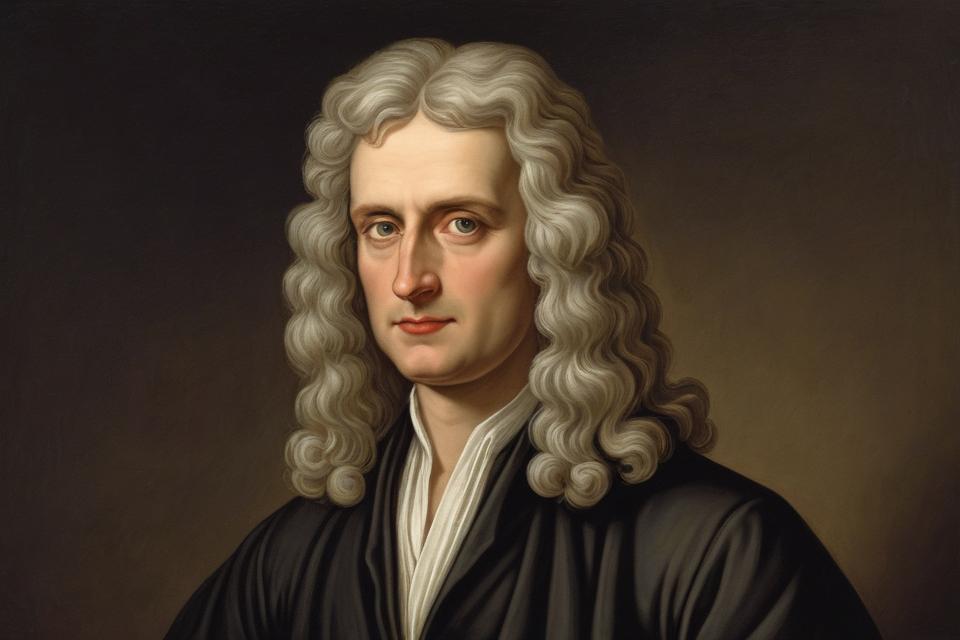
Isaac Newton’s groundbreaking work laid the foundations of modern science by elucidating patterns within the realm of human perception through his laws of motion. Building upon Newton’s legacy, scientific inquiry has branched into three key domains. Explorations into quantum physics have unveiled the mysteries of fundamental particles and the biochemical processes essential to life, while studies in general relativity have shed light on gravitational forces and the cosmic phenomena crucial for life’s emergence. The third and most complex frontier involves deciphering the connection between vast collections of particles that give rise to life and consciousness, a task that demands an understanding of complexity far beyond current mathematical and computational capabilities.
Recent advancements, however, have provided unprecedented insight into the brain’s observable and measurable activities, bringing us closer to understanding consciousness as a physical phenomenon. Techniques such as functional magnetic resonance imaging (fMRI), deep brain stimulation, and electroencephalograms (EEGs) have enabled researchers to trace neural activity, electrical impulses, and electromagnetic waves, revealing patterns that align with behavioral observations and subjective experiences. These breakthroughs suggest that the time is ripe for developing a scientific framework for consciousness, indicating a significant shift towards unraveling the mysteries of conscious experience.
5. Bridging Matter and Mind to Decipher the Cosmos
(Let’s expand on the previous ideas, exploring the philosophical implications of understanding consciousness within the framework of physical reality.)
The pursuit of understanding the universe’s fundamental components promises to weave a comprehensive and coherent narrative of reality. Although the complete narrative remains elusive, there is a vision of a future where scientists could offer a mathematically exhaustive explanation of the fundamental microphysical processes that underpin every occurrence across the cosmos. This vision aligns with the ancient philosophy of Democritus, who suggested that the myriad experiences of sweetness, bitterness, warmth, coldness, and color, in essence, reduce to interactions between atoms and the void, suggesting a unified basis for all phenomena governed by uniform physical principles. These principles, refined through centuries of observation, experimentation, and theoretical development, are likely to be encapsulated in a concise set of mathematical equations.
However, this narrative, as compelling as it might be, represents just one of many ways we interpret the universe. Humans possess the remarkable ability to adjust our lens of perception, adopting various scales of resolution and engaging with the world through diverse conceptual frameworks. Concepts such as entropy and evolution introduce narratives about randomness versus organization within particle systems, and about the processes of replication, mutation, and adaptation among molecular collections, respectively.

Yet, the narrative of consciousness introduces a fundamentally distinct challenge. It invites us to delve into the essence of human experience, encompassing thoughts, emotions, and memories. Unlike the narratives of entropy, evolution, and life, which can be recounted through detached, third-person perspectives, the story of consciousness demands a first-person narrative. It explores the subjective realms of sensory experiences, emotional states, and mental conditions, presenting a narrative that each individual seems to author personally. Addressing consciousness requires engaging with a deeply personal and autonomously subjective reality, raising profound questions about the nature of our inner lives.
The inquiry into whether mere matter can give rise to the rich sampler of conscious awareness, or if our perceived autonomy is simply the outcome of physical laws acting upon the brain and body, challenges traditional perspectives. Despite Descartes’ assertion of a distinct realm of consciousness, one might ponder if the particles and physical laws that constitute external reality hold the key to explaining the inner world of conscious experience. Consequently, understanding consciousness might necessitate a conceptual revolution as significant as those brought about by quantum physics and relativity. It argues that consciousness, perhaps perceived as enigmatic, could eventually be demystified through a conventional understanding of matter and physical laws. Such an explanation would extend the dominion of physical law into both the external realm of objective reality and the internal realm of subjective experience, proposing a unified framework that reconciles the outer and inner worlds.
6. The Unseen World of Brain Function
(Let’s now delve into the subconscious processes and the distinction between conscious and unconscious brain functions, reinforcing the complexity of the mind.)
While examining the evolution of consciousness and its profound significance, it’s crucial to recognize that not all brain functions command the same level of fascination and respect as consciousness. A substantial portion of neurological activity operates beneath the threshold of our conscious awareness, supporting the intricate architecture that enables focused attention on conceptual ideas, while delegating extensive linguistic and visual data processing to unnoticed brain functions. Our daily activities, such as speaking, walking, driving, and the automatic functioning of our bodily systems, occur seamlessly without requiring conscious oversight.
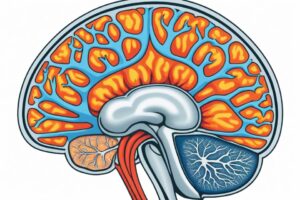
Additionally, certain processes operate below the level of conscious awareness yet have the capacity to influence it. A notable example is the unconscious mind’s ability to solve problems and present solutions spontaneously. The story of Otto Loewi, a German pharmacologist, illustrates this phenomenon vividly. On the night before Easter Sunday in 1921, Loewi awoke briefly and scribbled down an idea from a dream, only to find it indecipherable the next morning. The subsequent night, after experiencing the same dream, he acted immediately on its instructions, conducting an experiment that supported the hypothesis that chemical processes are pivotal in cellular communication. This experiment, inspired by a dream, eventually led to Loewi being awarded the Nobel Prize.
This narrative underscores the transition from the era of Sigmund Freud, characterized by speculative insights into the mind, to the present, where such conjectures are met with tangible data. Modern research techniques enable scientists to observe and analyze brain activity beneath conscious awareness, revealing the brain’s reliance on unseen influences.
These hidden regulatory, functional, and data-mining processes highlight the brain’s complexity and the ongoing challenge to map the extensive neural networks and physiological mechanisms underpinning various functions and behaviors. Despite the daunting nature of these tasks, progress in understanding the brain suggests a promising future. The advancements in neuroscience, coupled with a relentless pursuit of knowledge, offer optimism that the methodologies employed by science will continue to unravel the mysteries of the brain and consciousness.
7. Confronting the Hard Problem
(Focusing on the “hard problem” of consciousness, this section challenges the reader to consider the subjective nature of conscious experience and its relationship to physical processes.)
In the continuum of our exploration into consciousness and its profound implications, we encounter what is often termed the “hard problem” of consciousness. This problem centers on the distinctive nature of our inner experiences, which constitute the essence of what it means to be human. Our minds are the vessel for a rich interplay of subjective sensations, including thoughts, emotions, memories, images, desires, sounds, and smells, all integral components of consciousness. The daunting challenge lies in deciphering how our brains give rise to and maintain these vivid subjective worlds.

Despite the advanced understanding of the physical universe, where every particle in the brain interacts through the same forces and is described by the same mathematical principles applicable to particles in our surroundings or distant stars, these descriptions offer no insight into the subjective experiences these brain particles foster. The question arises: How can particles, devoid of mind, thought, or emotion, produce the inner sensations of color, sound, elation, wonder, confusion, or certainty? The properties we attribute to particles, such as mass and electric charge, appear entirely unrelated to any form of subjective experience. The mystery deepens when considering how a conglomerate of particles within the brain can manifest impressions, sensations, and feelings. For instance, while we may grasp how particles orchestrate movements to express a smile, grimace, cry, or frown, the underlying process by which these particles generate the inner sensations of amusement, happiness, or sadness remains elusive.
This challenge does not merely pertain to describing the complex dynamics of an astronomical number of particles; if that were the sole obstacle, it might be conceivable to overcome it with sufficient scientific and technological advancements. However, the true difficulty lies in the absence of first-person narratives that could illuminate the connection between the physical interactions of particles and our subjective experiences. Despite having direct access to our own inner worlds, we remain perplexed by the enigma of how these experiences are shaped by the motion and interactions of the very particles that constitute us. This gap in understanding highlights a fundamental disconnect between the objective descriptions of physical phenomena and the subjective reality of consciousness, underscoring the profound challenge that the hard problem of consciousness presents.
8. Charting Science of Existence from Atoms to Awareness
(Before concluding, let’s reflect on the scientific journey from understanding the basic building blocks of life to the phenomena of consciousness, suggesting a holistic view of existence.)
Building upon our exploration of consciousness, brain functions, and the intricate interplay between subjective experience and objective reality, we now turn our attention to the evolution of scientific understanding regarding the phenomenon of life itself. Over the past two centuries, the once near-mystical enigma surrounding the essence of life has significantly diminished. While a comprehensive understanding of life’s origins remains elusive, there is a nearly universal consensus within the scientific community that life’s emergence does not necessitate any supernatural “spark.” Instead, life is understood as a result of particles organized into a hierarchical structure of atoms, molecules, organelles, cells, tissues, and so forth. The consensus leans heavily towards the adequacy of existing frameworks in physics, chemistry, and biology to account fully for the phenomenon of life.
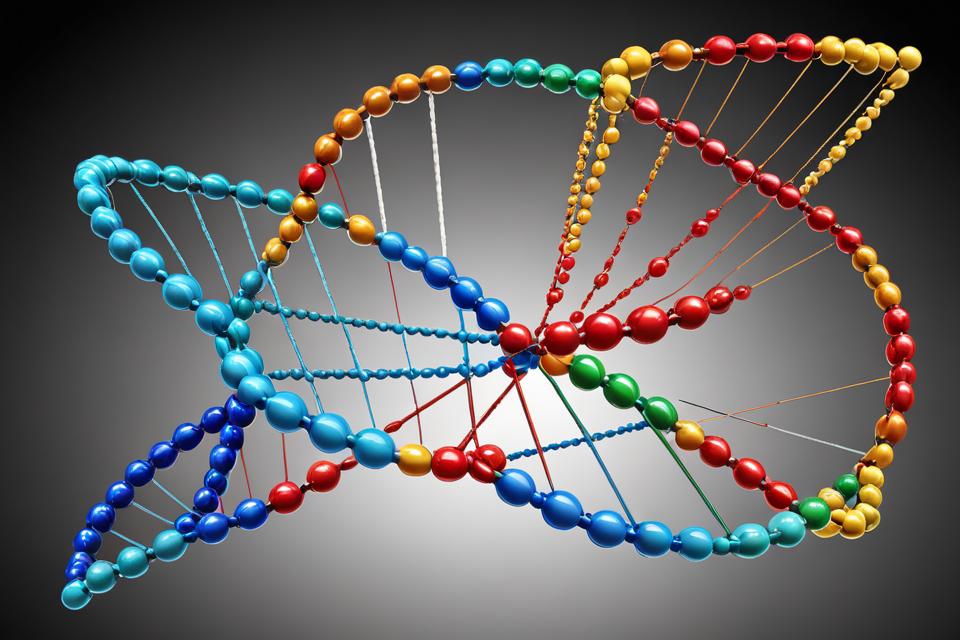
This perspective extends to the realm of consciousness and inner experience. Many scientists suggest that as our understanding of the brain deepens, the phenomena of inner experiences will increasingly be recognized as direct outcomes of the brain’s physiological processes. The gap in our knowledge is attributed not to the need for a novel kind of “mind-stuff,” but rather to our incomplete mastery over the brain’s intricate workings. It is anticipated that future reflections on the current era will regard our mystification of consciousness with amusement, acknowledging that the mystery we once perceived was, in fact, an artifact of our limited understanding. Research suggests that there exist data, and presumably equations, that can describe patterns and regularities within the realm of inner experience. Hence, while conventional science has adeptly explained the external world, the next frontier in science is poised to elucidate the internal domain of subjective, first-person experiences—a realm hitherto largely overlooked by physics.
The notion that our rich inner experiences might be entirely explicable within the bounds of physics and science, without resorting to explanations beyond the physical realm, signals a profound shift. Efforts are underway to delineate the physical conditions conducive to generating subjective experiences, suggesting that we are on the cusp of venturing into a new domain of reality ripe for exploration.
Conclusion
(Let’s end by encapsulating the journey undertaken in the essay, highlighting the ongoing challenges and the promise of future discoveries.)
As we have traversed from the emergence of consciousness in the primordial fabric of life to the complexities of brain function and the enigmatic nature of subjective experience, we stand at a pivotal moment in scientific inquiry. The journey from understanding life’s material basis to grappling with the “hard problem” of consciousness underscores a broader narrative of scientific progress. The challenges ahead involve bridging the divide between the physical processes of the brain and the subjective reality of consciousness, a task that requires not only technological and methodological advances but also a conceptual leap. As we peer into the future, the prospect of demystifying consciousness through the lenses of physics, chemistry, and biology offers an exhilarating frontier for discovery. This endeavor not only promises to unravel one of humanity’s most enduring mysteries but also to deepen our comprehension of what it means to be truly human, capturing the essence of our existence within the elegant framework of science.

